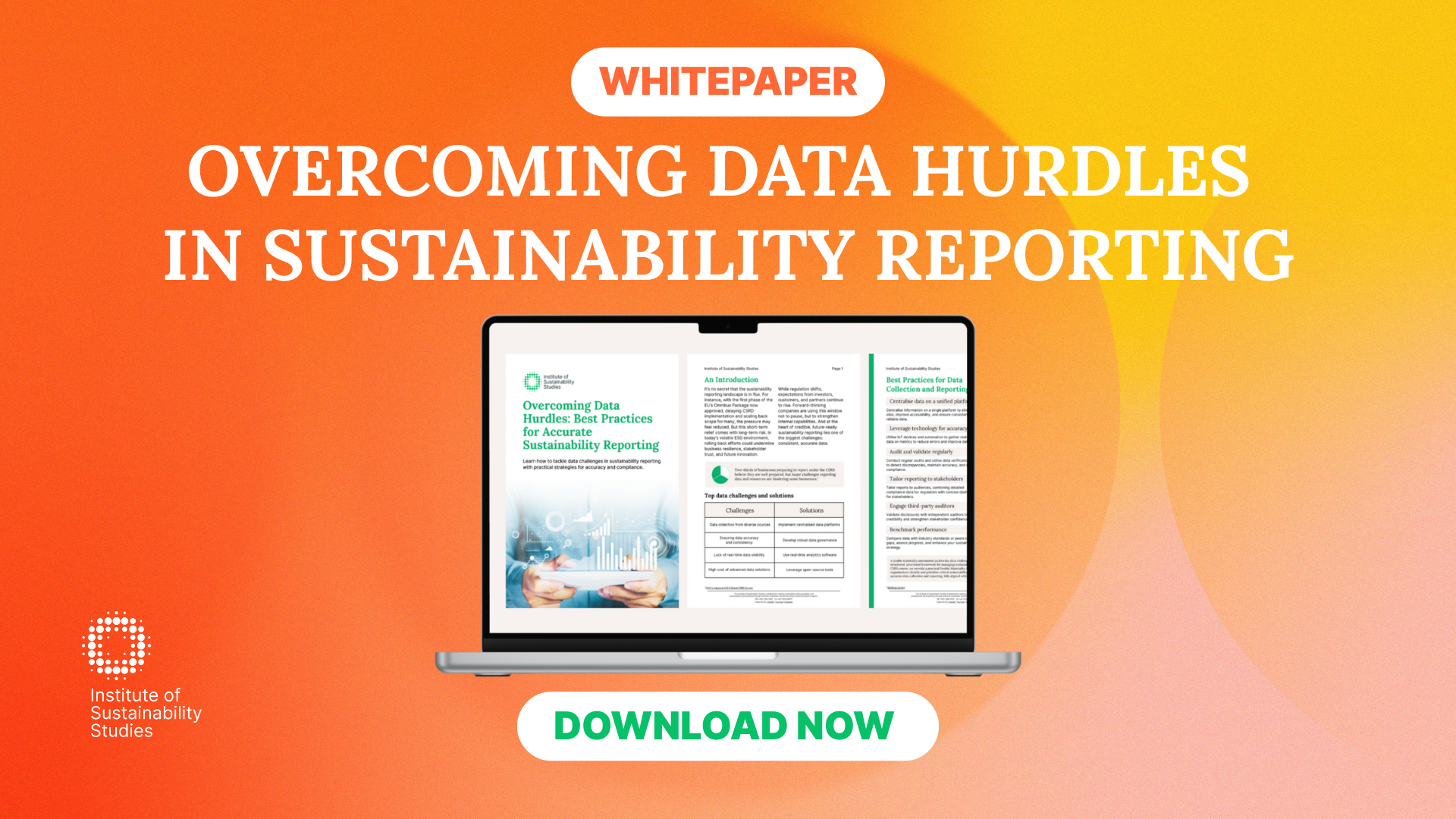What if every tonne of carbon released into the atmosphere carried a visible price tag? The concept of a carbon tax flips the script on pollution, turning an environmental cost often hidden from view into a tangible economic one. In a push to slow the pace of climate change, governments around the world are turning to this straightforward yet hotly debated tool. However, behind this simple concept lies a complex web of design choices, political realities, and economic trade-offs. Keep reading as we explore what a carbon tax is, how it works, and what it could mean for businesses, consumers, and the future of corporate sustainability.
What is a carbon tax, and how does it work?
A carbon tax is a fee imposed by a government on the carbon content of fossil fuels or the greenhouse gases emitted when they are burned. It is designed to make carbon-intensive activities more expensive, encouraging businesses and individuals to reduce their carbon footprint.
Below is an overview of how it works:
- Setting the price: Governments set a cost per tonne of carbon dioxide (CO₂) or CO₂-equivalent emissions from other greenhouse gases. For example, if the tax is £50 per tonne, burning a fuel that emits 1 tonne of CO₂ would incur a £50 charge.
- Point of application: The tax is often applied “upstream” to fuel producers or importers, such as oil refineries, coal mines, and gas suppliers. The cost is then passed through the supply chain to businesses and consumers.
- Behavioural impact: Higher prices for carbon-intensive goods and services encourage a shift toward lower-carbon alternatives, such as renewable energy, energy-efficient technologies, and cleaner transport.
- Use of revenue: Funds raised from a carbon emissions tax can be used to:
- Invest in renewable energy and low-carbon infrastructure.
- Support energy efficiency programmes.
- Provide rebates or “carbon dividends” to households and businesses.
Cut emissions and costs with practical sustainability training designed for measurable business impact
Examples of carbon taxes around the world
Carbon taxes have been implemented in many countries, but they vary widely in scope, price, and design. Below are some notable examples from around the globe.
Sweden
Sweden introduced its carbon tax in 1991, making it one of the earliest adopters. The rate is now set at over €100 per tonne of CO₂, making it the highest in the world. The tax applies to fossil fuels used for heating and transport, with certain exemptions for industrial sectors. Sweden has reduced emissions significantly since its introduction, all while maintaining strong economic growth. This illustrates that carbon taxes can work without slowing GDP.
Canada
Canada’s federal carbon pricing system came into effect in 2019, starting at C$20 per tonne and increasing annually to reach C$170 per tonne by 2030. Provinces and territories can design their own systems as long as they meet federal stringency requirements. The system is paired with a “carbon rebate” to households, aimed at offsetting the higher energy costs and maintaining public support.
Singapore
Singapore launched Southeast Asia’s first carbon tax in 2019, initially set at S$5 per tonne for large industrial facilities emitting more than 25,000 tonnes of greenhouse gases a year. The rate will rise to S$25 in 2024, S$45 in 2026, and eventually S$50–80 by 2030. Revenue supports decarbonisation projects, such as renewable energy investments and carbon capture technologies.
South Africa
South Africa implemented its carbon tax in 2019 at R120 per tonne. In the initial phase, generous allowances for specific sectors meant that the effective rate was much lower, giving industries time to adjust. The tax is part of South Africa’s strategy to address its heavy reliance on coal and transition toward cleaner energy sources.
Japan
Japan introduced its carbon tax in 2012 at a rate of ¥289 per tonne, applied to fossil fuels in proportion to their carbon content. Although the price is relatively low compared to other nations, it supplements Japan’s existing energy taxes and forms part of the country’s wider emissions reduction strategy.
Norway
Norway has had a carbon tax since 1991, covering sectors such as oil and gas production, transport, and heating. Rates vary by sector, but some pay as much as €70 per tonne. The tax works alongside the EU Emissions Trading System (EU ETS) to cover a large share of the country’s emissions.
France
France introduced an EU carbon tax in 2014 at €7 per tonne, increasing to €44.60 by 2018. Plans for further increases were suspended after the “gilets jaunes” (yellow vests) protests over fuel prices. Despite the pause, the tax has contributed to emissions reductions, particularly in the heating sector.
Do carbon taxes reduce emissions?
There is some evidence to suggest that carbon taxes can reduce emissions. However, their success depends on the design, scope, and level of the tax.
A carbon tax works by putting a price on each tonne of greenhouse gases emitted, making carbon-intensive activities more expensive. This price signal encourages businesses and individuals to shift towards cleaner energy, improve efficiency, and adopt low-carbon technologies.
The impact can be significant when the tax rate is set high enough, applied broadly across sectors, and paired with other measures such as clean energy subsidies and efficiency regulations.
Global evidence:
- Sweden has cut emissions by around 27 percent since introducing its carbon tax in 1991, while its economy has grown by more than 80 percent.
- British Columbia, Canada, saw per-capita fuel use fall by 16 percent in the first five years of its carbon tax, even as economic growth kept pace with the national average.
Not all carbon taxes achieve the same results. Lower tax rates, typically under $10 per tonne, often fail to meaningfully change behaviour. Public acceptance also plays a role; recycling revenue back to households or investing it in visible climate projects can improve support and enhance effectiveness.
The takeaway? Carbon taxes can be powerful tools for cutting emissions, but only when they are ambitious, widely applied, and backed by broader climate action.
What are the business and consumer implications of carbon taxes?
Carbon taxes influence both business operations and household spending by making carbon-intensive activities more expensive. While the short-term effects can be challenging, well-designed policies (and proactive responses from companies) can turn these challenges into opportunities for efficiency, innovation, and cleaner alternatives.
Higher costs in the short term
For businesses in carbon-intensive sectors such as manufacturing, transport, and energy, carbon taxes can mean higher operating costs. Consumers may also feel the pinch through increased fuel prices, energy bills, or the cost of goods with a high carbon footprint. These impacts can be reduced when companies invest in energy efficiency and low-carbon technologies, and when governments offer targeted rebates or subsidies to help households switch to cleaner options.
Pressure to change behaviour
By making emissions more expensive, carbon taxes encourage businesses to innovate, adopt greener production methods, and develop low-carbon products and services. For consumers, the price signal can prompt shifts towards public transport, energy-efficient appliances, or lower-carbon diets. These changes are easier to make when carbon tax revenues are used to improve access to affordable, low-carbon alternatives.
Competitiveness and trade concerns
When carbon pricing is stronger in one country than in others, businesses can face competitive disadvantages, particularly if they trade globally. Consumers may also see price changes or reduced availability of imported goods. To address this, governments can introduce Carbon Border Adjustment Mechanisms (CBAMs), ensuring that domestic industries remain competitive while maintaining climate ambition.
Opportunities through reinvestment
One of the most powerful aspects of carbon taxes lies in how revenues are used. If reinvested into clean energy infrastructure, industrial decarbonisation grants, and public services, the benefits can be shared widely. Businesses gain funding and resources to accelerate their low-carbon transition, while households benefit from rebates, reduced costs for clean technology, and improved community services, making the policy more effective and publicly supported.
Conclusion
Carbon taxes remain one of the most debated tools in climate policy, with evidence of both successes and limitations. Ultimately, their future role will depend on how they are designed, implemented, and supported alongside other measures to cut emissions. For policymakers, the challenge lies in balancing environmental goals with economic realities, public acceptance, and global competitiveness. Whether carbon taxes become a central pillar of the low-carbon transition or one of several complementary approaches will be determined by how effectively they deliver results in practice.
Equip your team to lead the low-carbon transition with
results-driven sustainability training
Dedicated to harnessing the power of storytelling to raise awareness, demystify, and drive behavioural change, Bronagh works as the Communications & Content Manager at the Institute of Sustainability Studies. Alongside her work with ISS, Bronagh contributes articles to several news media publications on sustainability and mental health.
- Bronagh Loughlinhttps://instituteofsustainabilitystudies.com/insights/author/bronagh/
- Bronagh Loughlinhttps://instituteofsustainabilitystudies.com/insights/author/bronagh/
- Bronagh Loughlinhttps://instituteofsustainabilitystudies.com/insights/author/bronagh/
- Bronagh Loughlinhttps://instituteofsustainabilitystudies.com/insights/author/bronagh/









